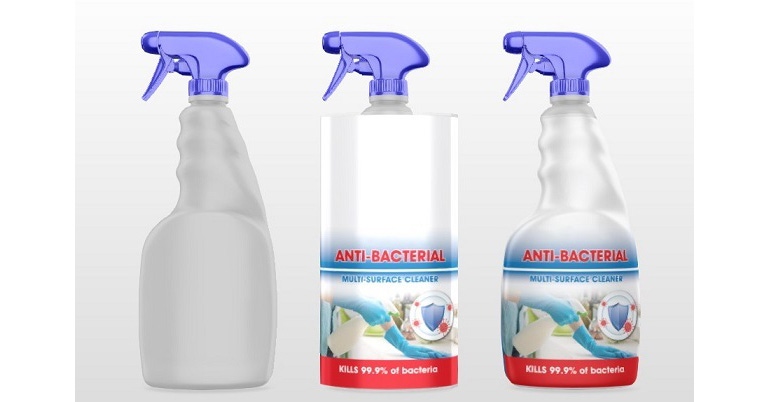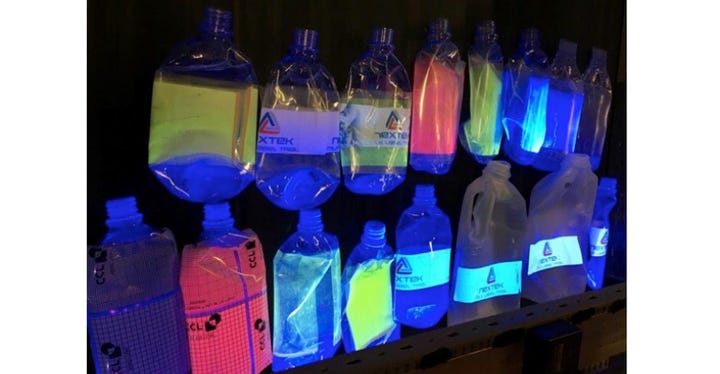The New Color of Recycling for Sustainable Plastic Packaging
July 1, 2020

New technology sorts through the recycling complexities of PET, HDPE, PP, and shrink-sleeved bottles to establish a pathway to improved identification and recovery.
Single-use plastic packaging has had its day and organizations around the world are now increasingly focusing on optimizing how to extend global plastic packaging production and the all-important after-use value chain.
Not everyone is on the same page, however.
By unanimous industry agreement in Japan there are no colored PET bottles and so recycling targets are easier to reach. However, other countries around the world struggle with an attachment to colored PET bottles. The same recycling constraints can be seen in other forms of colored high-density polyethylene HDPE and polypropylene (PP) packaging.
PP is a dominant part of the packaging stream with about 300,000 tonnes per annum (tpa) used in packaging out of a total of 700,000tpa.
About 70% of this (210,000tpa) is food-grade packaging, yet currently no food-grade recycled PP is available for use in new packaging.
Unlocking the value in used PP packaging to deliver high quality recycled PP resin back into new packaging promises to be key — and new technology is now available to do this.
However, if we are to overcome the current stalemates in today’s plastic’s economy, we are going to need everyone to pull together.
What brands can do.
Brand owners need to take additional transformational steps when it comes to their packaging design. The current attachment to colored bottles means having to separate the main colors such as natural plastics and white plastics. This is achievable, though it does mean that the bulk of the remaining materials are composed of various colors that create a new natural “self-colored grey” color once blended and extruded to granules.
It’s unlikely this “eco-echoing” self-colored grey will appeal to brand owners that are keen to maintain unique brand-design cues.
That leads us to seek other solutions if sustainability goals are to be reached, which brings us to plastic shrink-sleeve.
This is not the first time the ubiquitous film sleeve has surfaced as a potential solution to brand-owners' styling dilemmas. Up until a few years ago the shrink sleeve’s 360-degree design capability seemed to offer the perfect solution, but there were serious “teething” issues with cradle-to-cradle recovery.
Today’s shrink sleeves are better.
Today’s new shrink sleeves are vastly improved versions of these earlier counterparts. They have double perforations that are easily seen and provide consumers with simple removal from the bottle. Also, we are entering a new era of improved identification and sorting.
These sleeves have the potential to increase recycled content and save on masterbatch costs. They also go a long way towards preserving the original brand and design identity of the bottle to ensure consumer recall.
In fact, all the initial design benefits brand managers enjoyed when they first started using plastic sleeves are still present. Any visible part of the bottle would communicate to consumers that recycled plastics are being used, something that will be seen as a positive for the brand owners and consumers.
Improved recycling processes now enable both sorting and recycling with the sleeves in place on bottles. This is the case for PET sleeves on PET bottles, although the recognition of PET sleeves on HDPE bottles might seem more challenging.
Even in this scenario, however, there are potential solutions.
Some recyclers already use bottle de-labeling machinery to remove labels and external contaminants so that bare bottles continue to the automatic near-infrared (NIR) sorters.

Nextek's PRISM technology uses "invisible barcode" fluorescent markers during recycling for bottle polymer identification.
Modern methods provide better options.
Today’s sorting equipment can detect both the sleeve and the underlying polymer if the sleeve is thin, for example 50 microns. This would allow the identification of the combined signal and enable the classification of the bottles into the designated categories for recycling.
The ability to identify the bottle under the sleeve and therefore guide it to the correct recycling stream offers brand owners the added assurance their packaging would be properly recycled without relying on consumer input.
This is where markers, such as the PRISM fluorescent markers we explored in an earlier article — ‘Invisible barcode’ tech enables recycling of PP food packaging, published January 2020 — come into play, ensuring that sleeved bottles are properly identified during sorting.
This kind of technology spells out a new potential future for sleeved bottles as it allows brand owners to maintain their strong design appeal whilst upping their recycling factor. It’s also the catalyst behind NEXTLOOPP, a multi-client project drawing in a number of brand-owners, converters, recyclers and machinery companies that is due to launch in late June that focuses on recycling PP into food-grade material.
In the current environment where there is clearly “no away” and Producer Responsibility needs to come to the forefront; self-colored grey is set to represent the new normal color of sustainable packaging that is continually recovered and recycled.
The opportunities for innovation via sleeves and labels are vast and could help both brand owners and consumers meet their targets and expectations for recycled content. Making it technically possible for all our plastic packaging to be reused or recycled will go a long way towards boosting the plastic recycling sector and establishing a stronger circular economy, something NEXTLOOPP is aiming for.
Stay tuned for further developments!
About the Author(s)
You May Also Like




